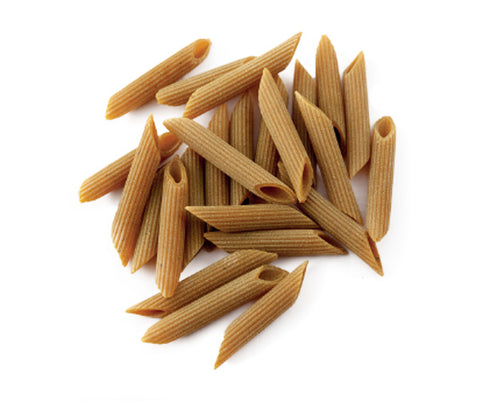Growing evidence supports the potential benefits of functional foods or nutraceuticals for human health and disease.
Black cumin ( Nigella sativa L.), a highly regarded nutraceutical herb with a wide range of health benefits, has attracted increasing interest from health-conscious individuals, the scientific community, and the pharmaceutical industries.

The Pleiotropic Pharmacological Effects of Black Cumin
The pleiotropic pharmacological effects of black cumin and its major bioactive component thymoquinone (TQ), have been manifested by their ability to attenuate oxidative stress and inflammation and promote immunity, cell survival and energy metabolism.
These effects are the basis of several health benefits, including protection against metabolic, cardiovascular, digestive, liver, kidney, respiratory, reproductive and neurological disorders, cancer and so on.
Additionally, black cumin acts as an antidote, mitigating various drug-induced toxicities and side effects.
A molecular study showed that black cumin inhibited the covid-19 virus with equal or better results than drugs used in intensive care units to treat patients.
Therapies with plants and their components
So far, apart from supportive therapy, no specific treatment against this virus has proven effective. Therefore, specific drugs for this disease are still being studied.
Researchers are studying a large number of herbal plants and their components to discover such specific drugs.
Identifying the medicinal components of these plants and their effectiveness in treating diseases may pave the way for important new discoveries in the treatment of COVID-19.
Several plants have active biomolecules with proven therapeutic properties.
Such plants have been used since ancient times to treat various human diseases 2 . Nigella sativa is one of them, usually called black cumin .
It has long been used as a condiment and mitigating agent in various diseases 3 .
The black cumin plant has a rich historical and religious background as a magical seasoning herb 4 .
This plant is usually grown in the Middle East, Europe and Asia. It contains small black seeds, known as black cumin or black seeds.
Thymoquinone (TQ) is the most pharmacologically active ingredient of these seeds .
Recent pharmacological studies have suggested its probable role in many disorders especially in conditions of respiratory distress 5 .
Lung inflammation is the main pathophysiological feature of COVID-19 patients, in which immune and oxidative processes are involved.
Thus, inhibiting or modulating these processes may help overcome COVID-19 6 .
Black cumin has the ability to modulate or inhibit such processes 7 . This study summarizes this supportive potential of black cumin.
Phytoconstituents of black cumin (n.sativa)

The first report on the chemical composition of N. sativa seeds was published in 1880 8 .
To date, many active compounds have been isolated and identified from this plant species.
The general ingredients of this plant are carbohydrates, proteins 9 and other biochemical components such as thymoquinone.
There are other trace elements, including vitamins (niacin, thiamine, riboflavin, folic acid, pyridoxine, vitamin E) and minerals (magnesium, potassium, phosphorus, sodium, copper, calcium and iron 10 .
Most of the pharmaceutical companies are working on TQ (Thymoquinone) 11 .
It is widely recognized for its broad spectrum medicinal properties including antiproliferative, gene regulatory, antioxidant and protective effect against various viral or bacterial respiratory problems 2 .
Generally, the constituents present in black cumin can be divided into two categories; volatile and non-volatile compounds 12 .
The volatile contains saturated fatty acids. This portion of the seed also contains: t-anethole, p-cymene, 4-terpineol, carvacrol and longifolin 13 .
Non-volatile compounds
The other category found in N. sativa is non-volatile compounds, i.e. alkaloids. The seeds have two different types of alkaloids; isoquinoline alkaloids such as nigellicimine and pyrazole which includes nigellidine and nigellicine.
In addition, proteins, saponins, fatty acids, carbohydrates and phenolic compounds such as flavonoids have also been reported 14 .

Preventive Effects of Black Cumin in Covid-19 Patients
Lung inflammation is the main pathophysiological feature of COVID-19 patients in which immune and oxidative processes are involved 15 .
Thus, finding a protective and multi-potential drug to stop such respiratory distress is the main goal for effective treatment of COVID-19 16 .
Black seed on the immune system has been studied by many researchers in respiratory distress conditions. All studies have shown that N. sativa inhibits the cyclooxygenase 17 and 5-lipoxygenase pathways of arachidonic acid metabolism.
This efficacy on lung inflammation showed the ameliorative effect of N. sativa against leukocytes and eosinophils which may be related to anti-inflammatory and antioxidant properties 18 .
This medicinal potential is due to nigellone and the carbonyl polymer Thymoquinone (TQ) which inhibits the release of histamine from peritoneal mast cells by decreasing intracellular calcium through inhibition of protein kinase C and oxidative energy 19 .
Anti-inflammatory and immunomodulatory aspects of Thymoquinone
According to recent reports, a variety of COVID-19 cases admitted to intensive care units showed high levels of proinflammatory cytokines including TNFα (tumor necrosis factor alpha), IL-6, and lymphopenia with acute respiratory distress syndrome.
IL-6 levels were significantly correlated with the severity of COVID-19.
Thus, the inhibitory effect on IL-6 could prove to be an effective treatment 20 .
Such inflammatory changes can be easily addressed through Thymoquinone (TQ) as it has the ability to modulate or inhibit inflammatory responses, such as IL-1, IL-6, IL-10, IL-18, TNF-α and NF-κB 21 .


Responses of thymoquinone under the influence of its immunomodulatory and anti-inflammatory activities
Thymoquinone (2-Isopropyl-5-methyl-1, 4-benzoquinone) is the main bioactive component of N. sativa.
It has been found to exhibit numerous activities such as antioxidant, antihistaminic, antitumor, analgesic, anti-Alzheimer's, hepatoprotective, neuroprotective, renoprotective, histone protein modulator, insecticidal and anti-ischemic 23 .
According to some reports, TQ inhibits the cytokines 5-lipoxygenase, leukotrienes B4, C4 and Th2 in bronchoalveolar lavage fluid (BAL) with a significant increase in the number of eosinophils and cells 24 in lung tissue 25 .
It also inhibits the mRNA expression of inducible nitric oxide synthase and transforming growth factor β1 (TGF-β1) 26 .
This anti-inflammatory outcome of TQ is caused by the increased expression level of heme oxygenase 1 (HO-1) in human keratinocytes (HaCaT), which is activated by nuclear factor (NF) via ROS-mediated phosphorylation of protein kinase B (PKB) and protein kinase alpha (PKα) 27 .
Thus, it indirectly antagonizes the side effects caused by increased ROS level 28 .
This antioxidant potential of TQ could be associated with the redox properties of the quinone structure and the unlimited ability of TQ to cross substantial barriers to the cellular alcove 29 .
Effect of “nigellidine” and “α-hederin” as a potential inhibitor against covid-19
Black cumin has demonstrated broad therapeutic effects against many ailments.
These disorders present voluminous confirmation for biological and biomedical activates.
The COVID-19 virus has three important proteins, known as papain-like protease (PL Pro ), 3C-like protease (3PL Pro ), and spike protein (SP) like SARS virus.
These are attractive targets for drug development 30 .
These proteins could be the target of black cumin compounds to identify beneficial molecules in the treatment of COVID-19.
A molecular docking study showed that “Nigellidine” and “α-hederin” from black cumin inhibited COVID-19 and SARS virus and gave equal or better results than drugs used in intensive care units to treat patients 31 .
Sources:
- Phytomedicine. 2021 May;85:153277. doi: 10.1016/j.phymed.2020.153277
- Majeed et al., 2020
- Dubey et al., 2016
- Ijaz et al., 2017 ; Ikhsan et al., 2018 ; Shrestha et al., 2012 ; Zaidi et al., 2015
- Hossein et al., 2008 ; Mohebbati and Abbasnezhad, 2020 ; Randhawa, 2008 ; Zaher et al., 2008
- Danzi et al., 2020 ; Rothan and Byrareddy, 2020 ; Zhe Xu et al., 2020
- Shaterzadeh-Yazdi et al., 2018
- El-Tahir and Bakeet, 2006
- Gholamnezhad et al., 2015
- Ahmad et al., 2013 ; Amin and Hosseinzadeh, 2016 ; El-Tahir and Bakeet, 2006 ; Tembhurne et al., 2014
- Forouzanfar et al., 2014
- Oskouei et al., 2018
- Ahmad et al., 2013 ; Enomoto et al., 2001
- Tavakkoli et al., 2017
- Danzi et al., 2020
- Li et al., 2020
- Goyal et al., 2017
- Hossein et al., 2008
- Gali-Muhtasib et al., 2006
- Liu et al., 2020 ; Rothan and Byrareddy, 2020
- Shaterza deh-Yazdi et al., 2018 ; Srinivasan, 2018
- Islam et al., 2019 ; Majdalawieh and Fayyad, 2015
- Ahmad et al., 2019 ; Khader and Eckl, 2014
- chalice for me
- El Gazzar et al., 2006
- Ammar et al., 2011
- Khader and Eckl, 2014
- Mansour et al., 2002
- Darakhshan et al., 2015
- Zhang et al., 2020
- Bouchentouf and Missouri, 2020



